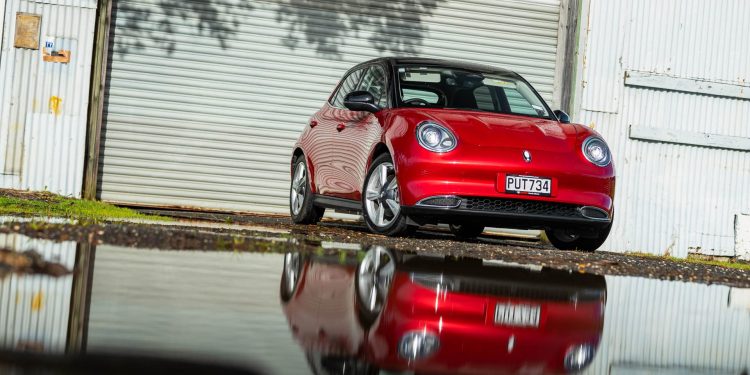2023 GWM Ora Standard Range review
Words: Kyle Cassidy | Photos: Isaac Western
The GWM Ora is one of the more affordable new EVs on the market. It’s a funky looking thing and well specified but does it all stack up?
As interest in electric vehicles continues to grow, so does the number of offerings on the local market.
GWM is on a ‘new energy’ drive at present with both its Ora electric sub-brand and its Haval SUV range, the latter with a focus on hybrids while more advanced plug-ins are in the wings. But here and now it’s the electric Ora on offer.
This electric hatch we’ve featured before with a drive of an evaluation unit last year while here we have the New Zealand spec car you can actually buy. What’s changed in the interim? Not a whole lot really, apart from the name.
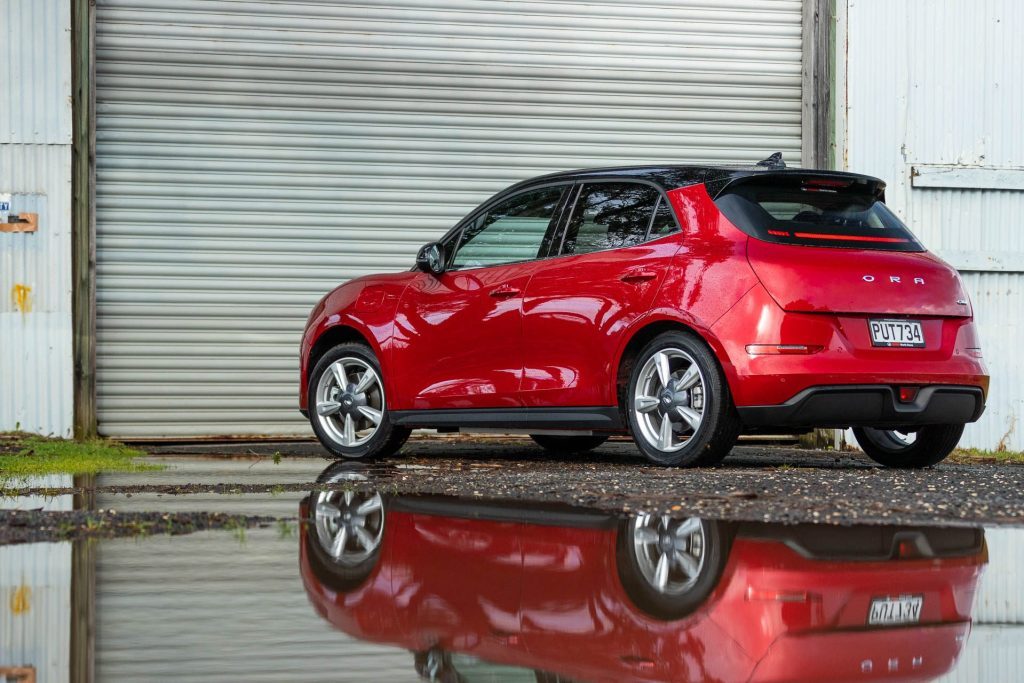
In some markets it’s known as the Good Cat, in others it’s the Funky Cat but here it’s simply called Ora; no feline references for our market please.
There are two models available; the Standard Range for $49,990 with the 48kWh battery and the Extended Range with 63kWh unit and a tag of $55,990. That’s before ORCs and the $7015 electric rebate.
And so the Standard Range, featured, is one of the most affordable EVs on the market, being the same price as the entry-level MG ZS EV. However, MG’s incoming MG4 with a 51kWh battery will be the new price leader for the local market starting at $46,990.
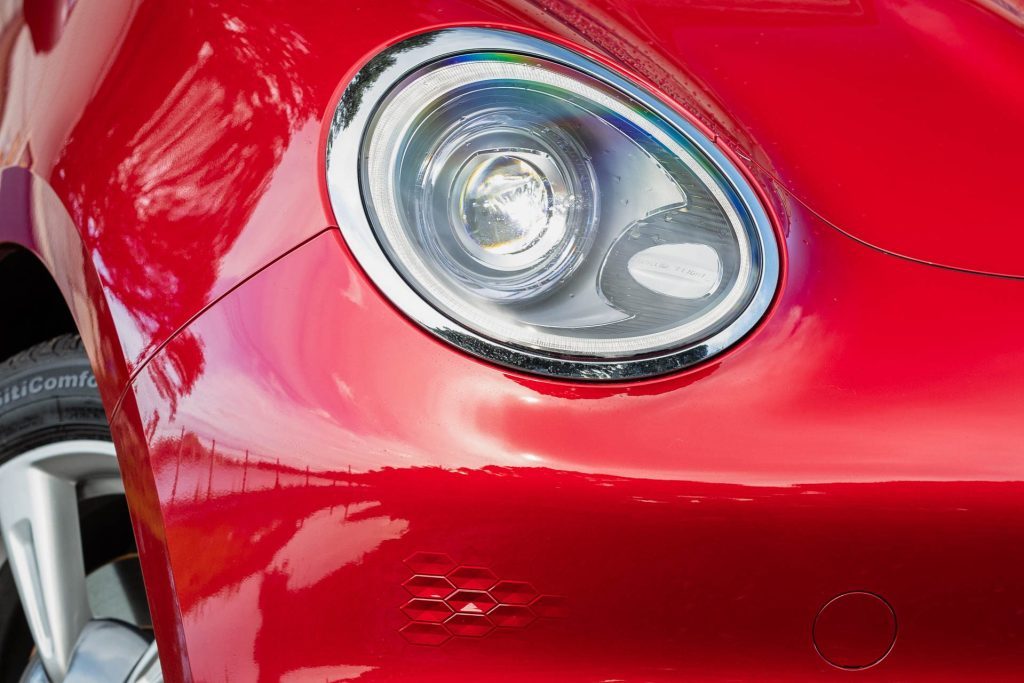
Wonder if we’ll start seeing some price movement as others try to compete. Nissan for example has realigned Leaf pricing, now starting at $49,990. But wait – since we drove this, GWM has cut the price to $47,990, the Extended now $52,990.
Ora battery capacity and range
The primary difference between the models is the battery size, the Standard’s 48kWh pack (45kWh usable capacity) giving a stated 310km range WLTP, while the Extended’s 63kWh (59kWh usable) adds a further 110km.
Both have the same 126kW/250Nm motor up front driving the front wheels, and they will scoot to 100km/h in 8.4sec. The bigger battery only adds another 40kg to the mass, as it uses the more energy dense Lithium-ion Ternary type battery with its nickel cobalt manganate cathode material.
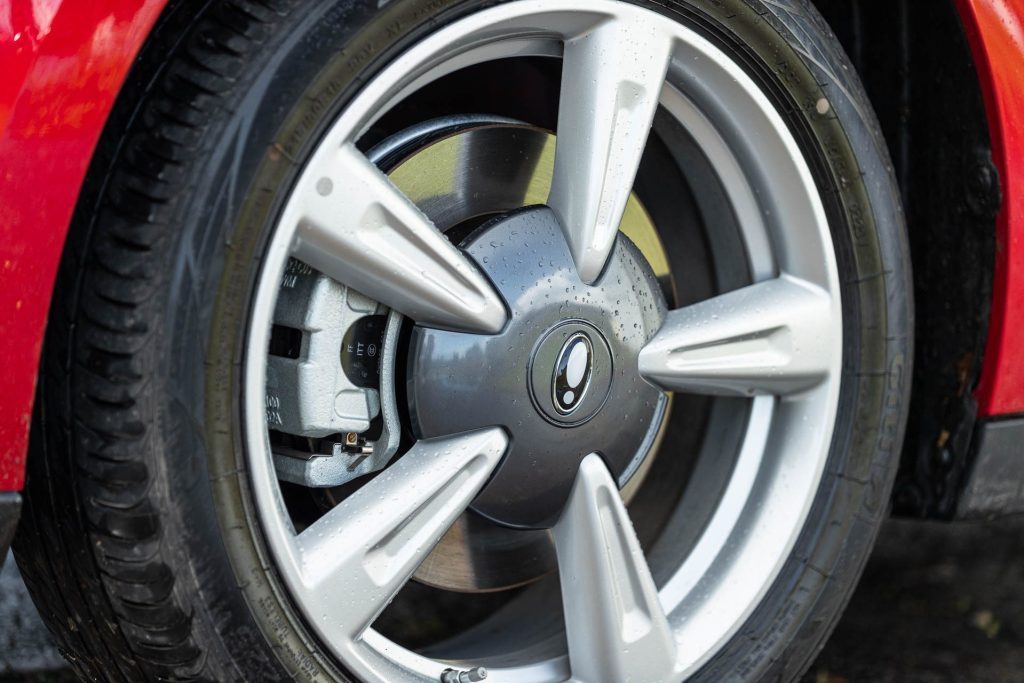
And that’s why we’d not bother with the Extended Range model. The Lithium Iron Phosphate battery in the Standard is generally regarded as a safer chemistry and one that degrades at a slower rate; keep it for long enough and potentially you’ll have more capacity left anyway.
And the Ora is an urban car. You really won’t need the extra range, as 300km is ample in town. Both have the same 80kW max DC fast charge rate and each has an 11kW onboard AC charger.
So save yourself $6k, the Standard Range model is enough while its production consumes fewer rare earth materials.
The smaller battery also means there’s less to get rid of when it eventually dies. GWM gives the battery an eight-year/unlimited kay warranty, while the car itself is covered for five years/150,000 kays.
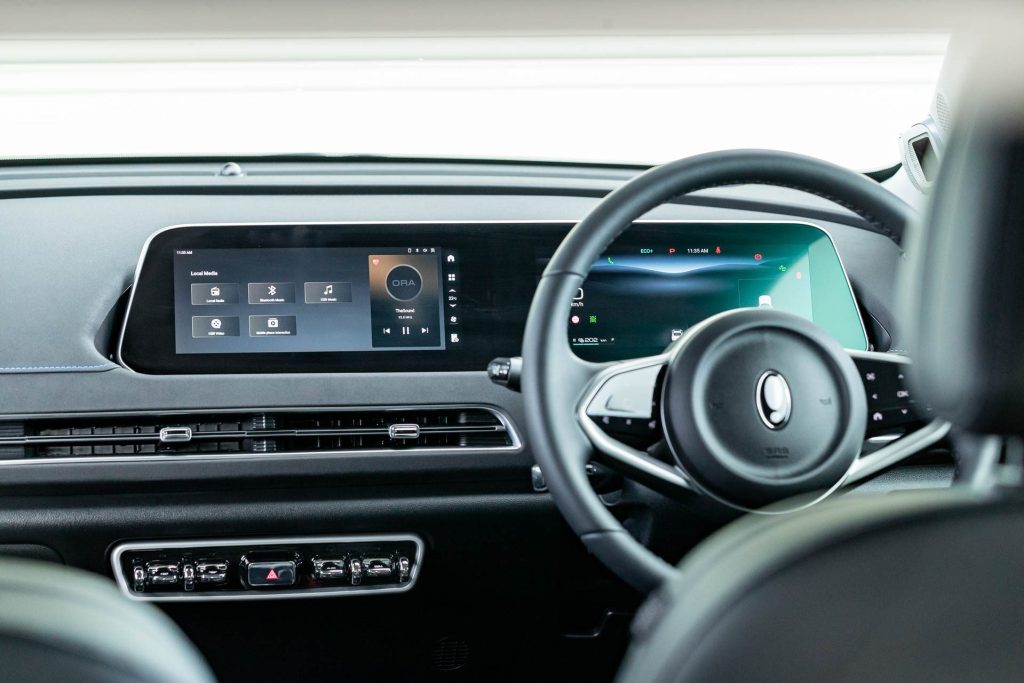
Still a funky cat
The styling is bold and will ultimately determine whether you like or loathe the Ora. It’s different and certainly stands out. It has surprised some just how quickly the newcomers from China have got up to speed on safety.
The Ora has a five-star ANCAP score and a long list of active safety features. Some are overly involved, the lane keeping system is one, and the following distance warning is also a little too persistent.
There’s active cruise with stop and go, though we failed to realise this as the controls are concealed behind the wheel.
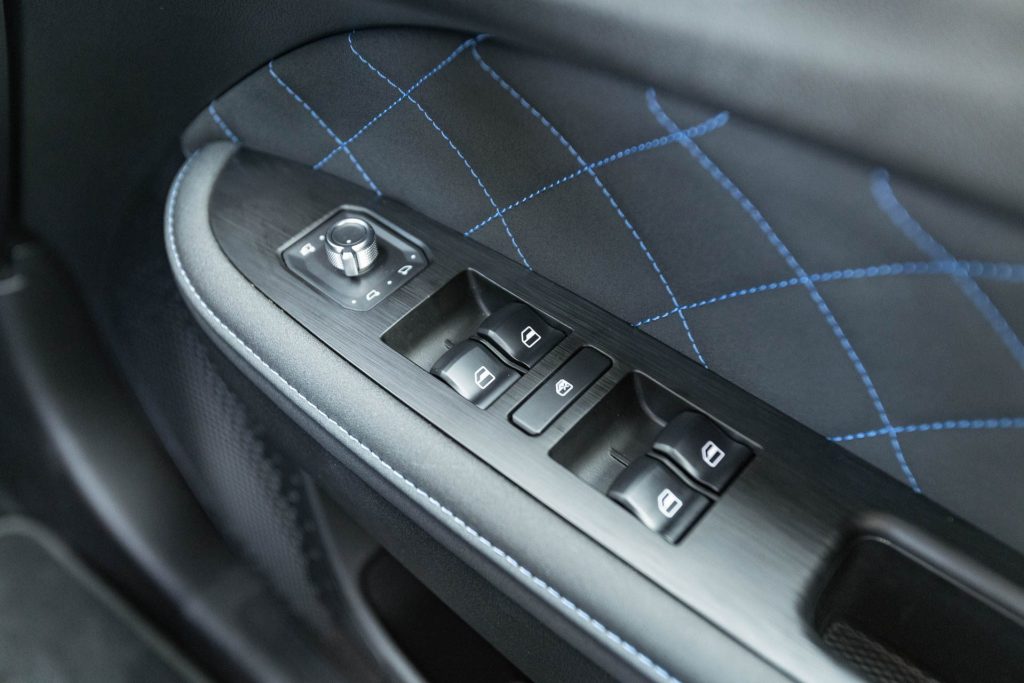
The power delivery is refined, just right in the Normal drive mode with that ‘zippiness’ people like of an EV. Selection of each drive mode is accompanied by comical little jingles, including what sounds like a gun cocking when you activate Sport. Eco is best left for when you’re running low on charge.

You can pick between three levels of brake regeneration and there’s a decent one-pedal mode as well. However, it always defaults back to the ‘strong’ setting on start-up, and as changing it up requires too many taps on the screen, you just give in and live with it.
It’s not bad however, as it slows progressively while you learn to tread lightly on the rather sensitive brake pedal. You can alter the steering weight too from light to comfort to sport and it manages to remember that.
It’s super breezy on the lightest setting, good for town running, and free of any untoward self-centring nonsense. It’s quick between the stops and it has an urban friendly turnaround. The ride quality isn’t too shabby either, and tyre noise is hushed.
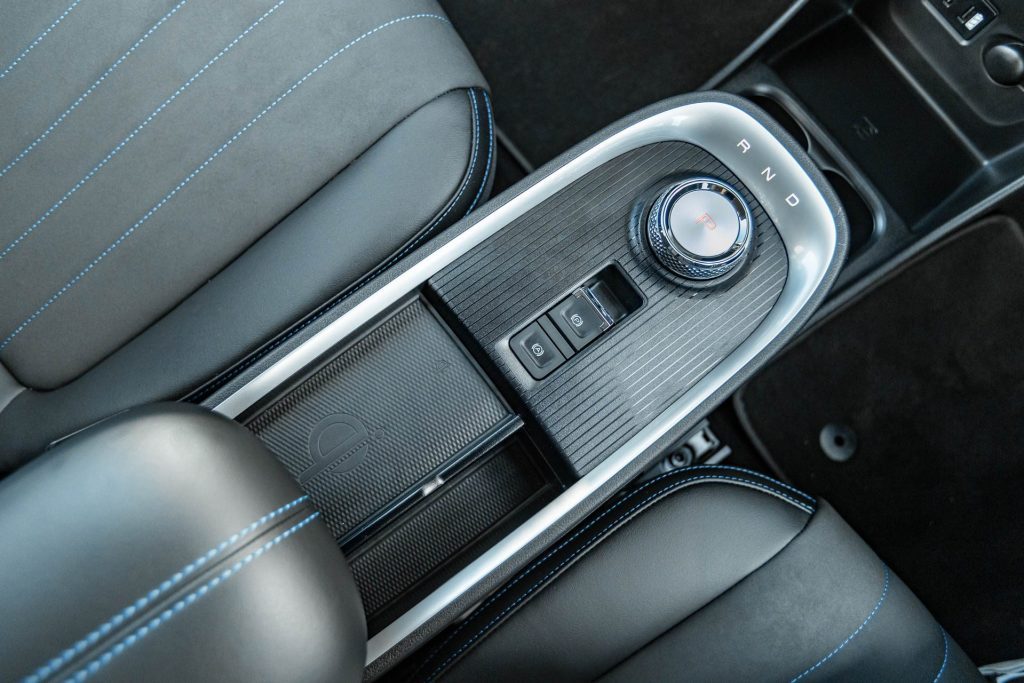
What’s the range like?
The energy use gauge varied between 15 and 17kWh/100km, depending how heavily we trod on the pedal. When we collected it, the DTE was showing 303km with a full battery.
After a couple of days it was down to 45 per cent, having travelled 147km, with 145km to go on the DTE.
Using the supplied trickle charger, it absorbed 17.4kWh over 13 hours, while 30 minutes at a 50kW DC added almost the same amount (17.8), each charge adding around 90km to the DTE.
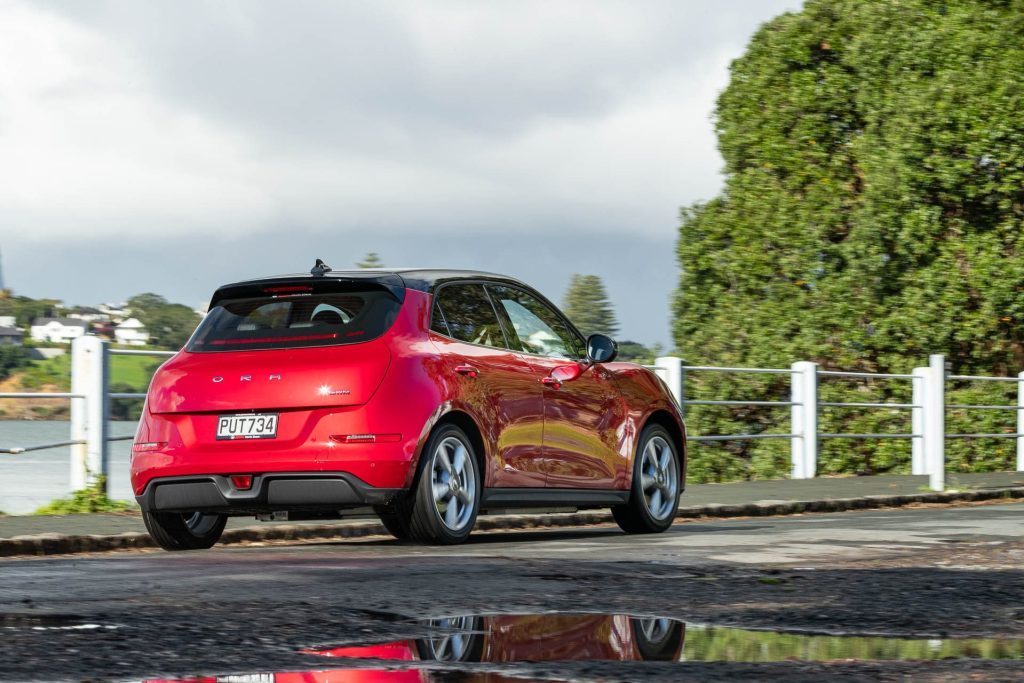
While it’s clearly made for urban life, it performs well outside of the city limits. There are a few more bumps felt on lumpy highway trails via the torsion beam rear end but this cruises happily, slowing for the bends largely via the brake regen.
While the steering feel is vague, it turns faithfully as the weight is balanced and the grip is decent. In Sport mode, the torque hit is enough to get the inside wheel spinning briefly out of the bends before the TC snuffs it out.
But it’s otherwise calm and confident on the go, with nothing untoward here.
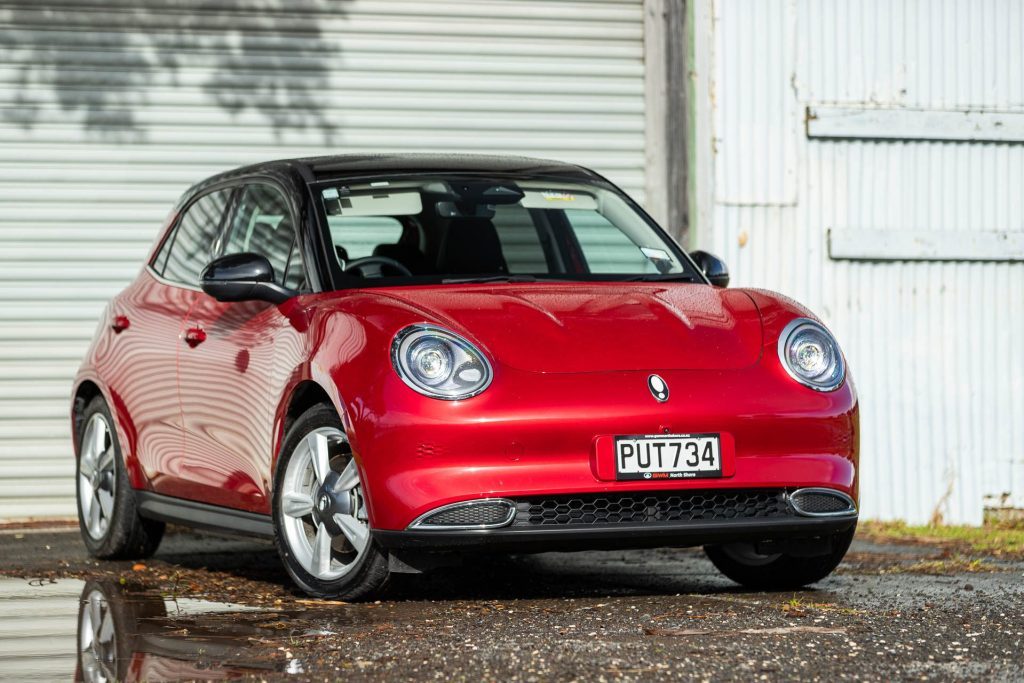
Practical and pleasant?
This car has a more palatable interior decor than the last one we drove, which was a green and cream mash up. Black is far more serviceable while the blue stitching adds a touch of class, as does the diamond quilting.
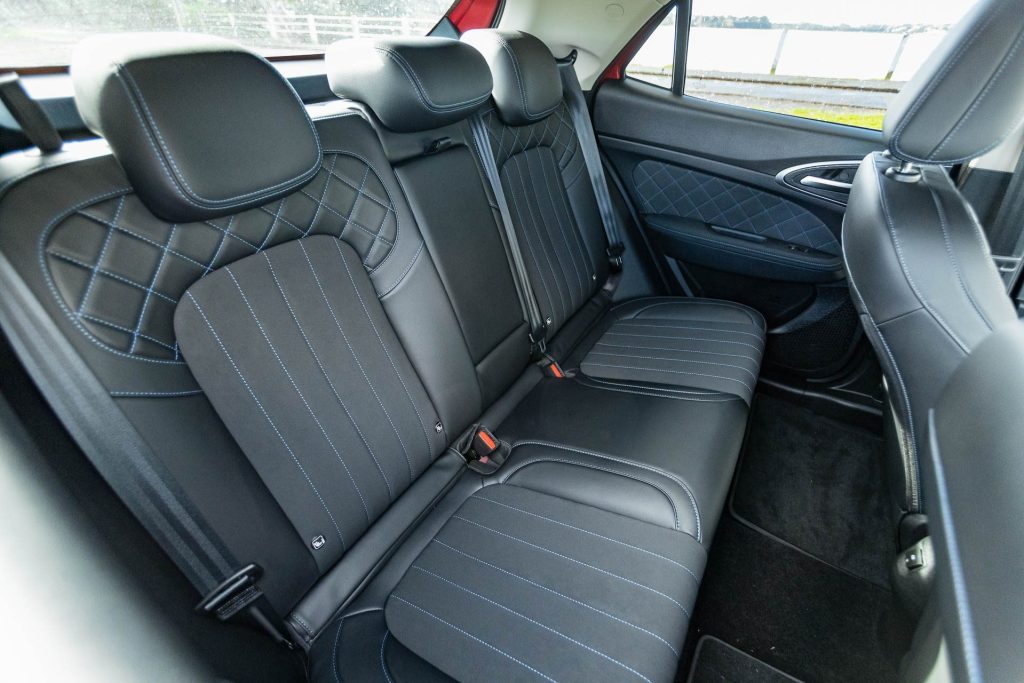
The leatherette trim used is one of the more plausible fake hides, while there are just enough soft points about and the plastics are okay too. The seats are rather flat, and while a bit more adjustment would be good, they are comfortable enough.
Its instrument panel gives the driver a good range of info, though most space is dedicated to what the safety minders are doing. The touchscreen is also vibrant with a reasonable response rate.
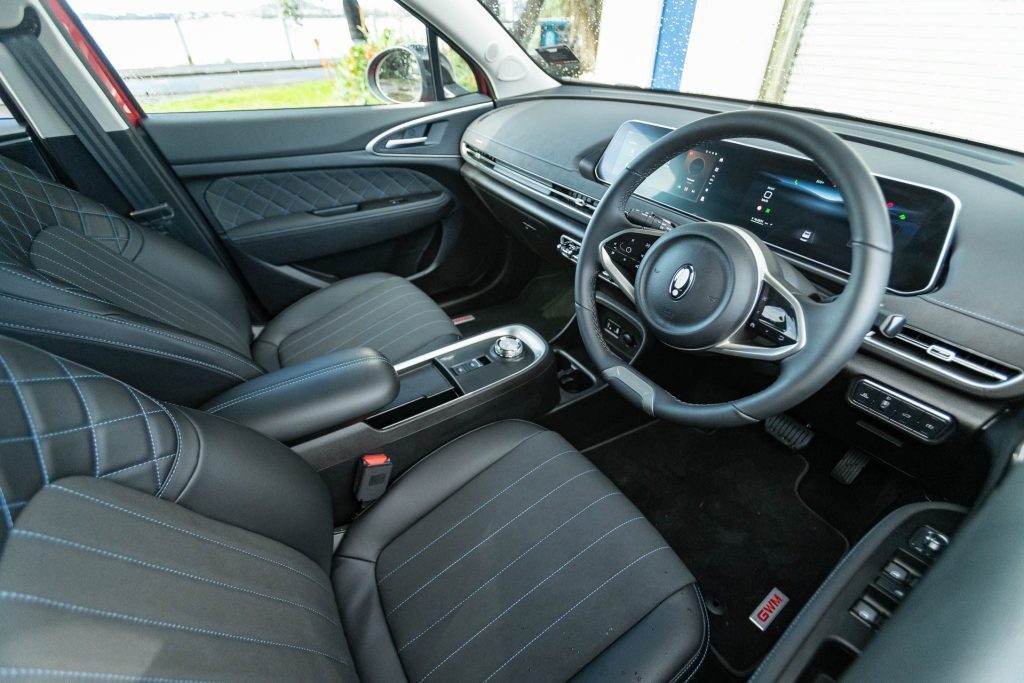
But it’s on the smaller side and the touch points are tiny; those with sausage fingers will struggle.
And generally, at least three or four taps or swipes are needed to get stuff done. You’ll also require a phone if you want sat nav and preferably an Apple because CarPlay is a feature but not Android Auto.
The parking camera is excellent however, with a range of view points.
For a small car, there’s decent legroom in the rear thanks in part to the flat floor. The boot though is small, not wide, deep or long. We had to split fold the rear seats to fit the weekly grocery shop in.

While there are a few frustrating aspects over the safety features and the operation of the touch screen, the Ora is an easy drive, and one with a lot of features. However, it’ll be the styling and the size that’ll make or break it for you.
| Model | GWM Ora Standard Range |
| Price | $47,990 |
| Clean Car Discount | Rebate – $7,015 |
| Motor | 126kW/250Nm |
| Battery | 48kWh |
| Range | 310km |
| Drivetrain | single-speed auto, FWD |
| Energy Use | 16.7kWh/100km |
| C02 Output | 0g/km |
| 0-100km/h | 8.4sec |
| 80-120km/h | 6.00sec (172m) |
| 100-0km/h | 36.80m |
| Stability systems | ABS, ESP |
| Safety | AEB, ACC, BSM, LDW, RCTA, ALK, AHB |
| Luggage capacity | f-228-858L |
| Tow rating | Not rated to tow |
| Service intervals | 12 months, 15,000km |
| Warranty | 5yrs, unlimited km |
| ANCAP rating | 2022 |
| Weight | 1540kg (claimed) |


